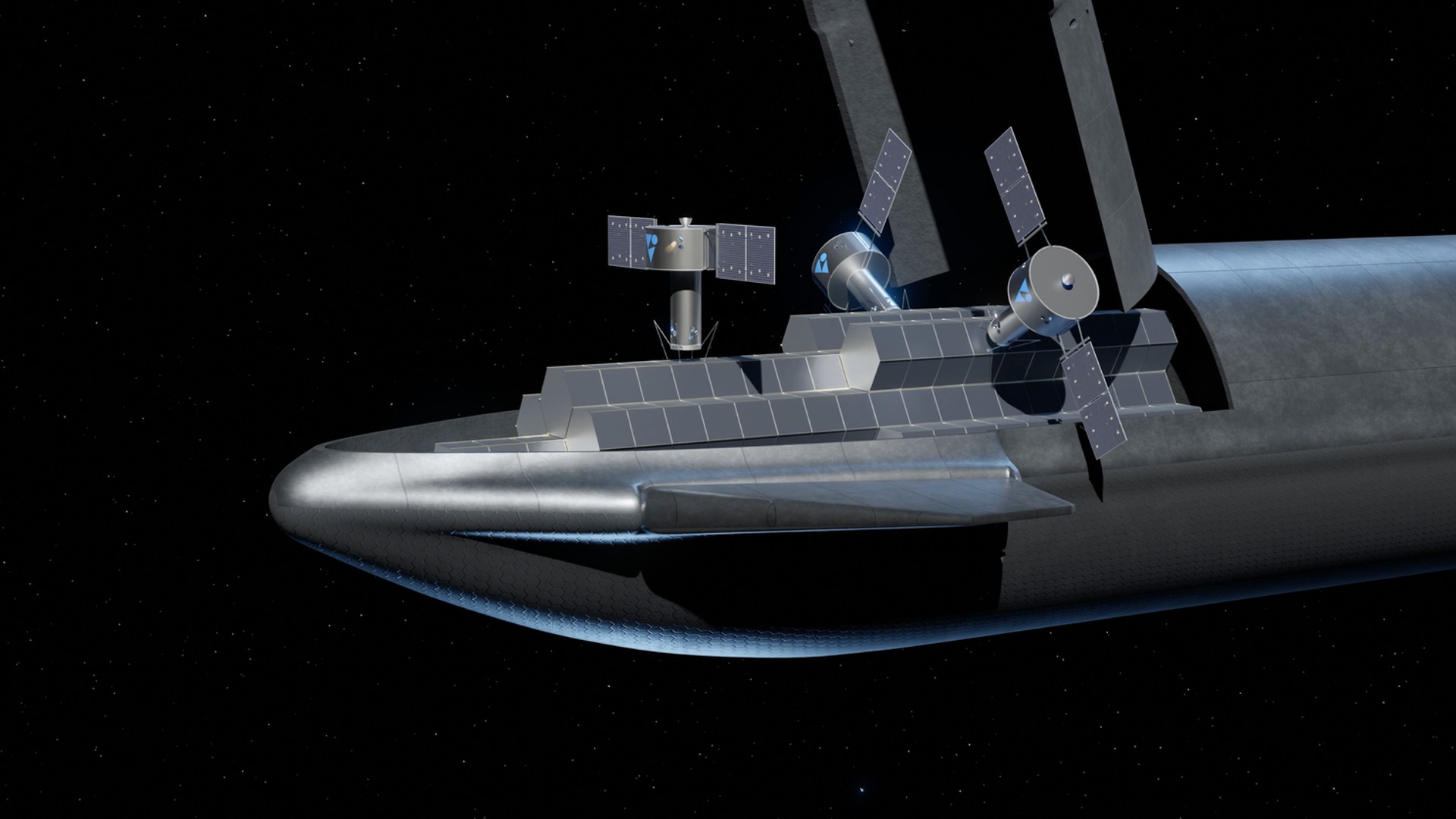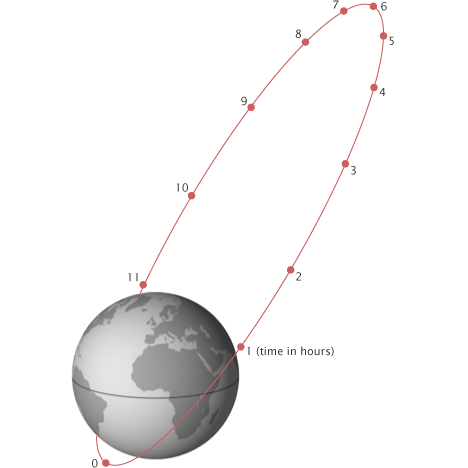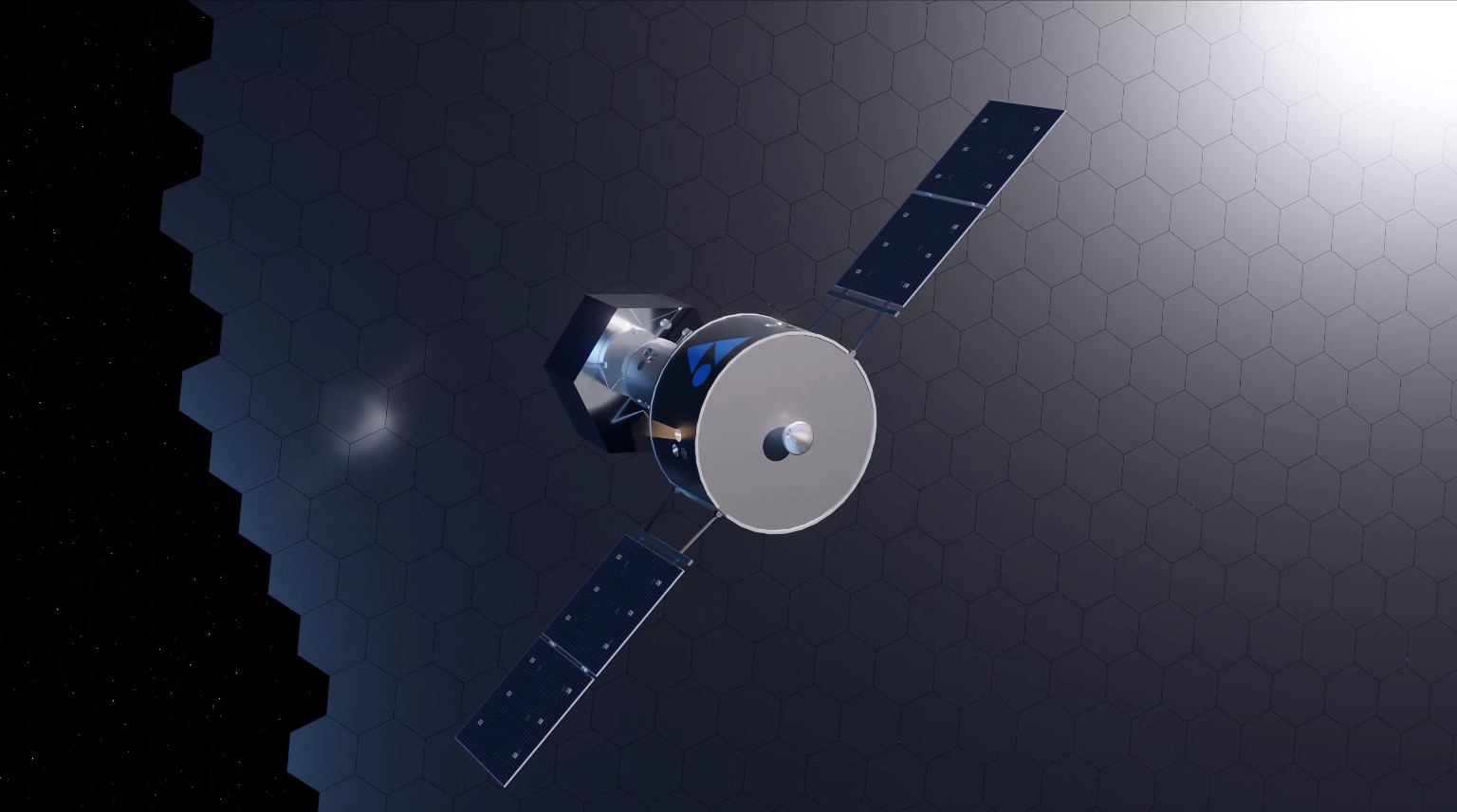SpaceX's Starship could help this start-up beam clean energy from space. Here's how (video)
"Once Starship is fully reusable, that will drive down the cost."
LONDON — SpaceX's Starship will be a game changer for space-based solar power generation and will make orbiting power plants not only affordable, but cheaper than many other methods of generating electricity on Earth, according to Michigan-based start-up Virtus Solis.
Virtus Solis, founded by former SpaceX rocket engineer John Bucknell, introduced their solar power beaming concept at the International Conference on Energy from Space held in London on Wednesday, April 17.
"For space-based solar power to work, you need to have heavy-lift launch, you need to have wireless power transfer and you need to have the economics," Bucknell said at the conference. "Once you have low-cost access to space, that's one less miracle that you need to have solved."
Related: Space-based solar power may be one step closer to reality, thanks to this key test (video)

The cost of launching satellites to space has plummeted in recent years thanks to the advent of reusable rockets pioneered by SpaceX. The company currently charges under $3,000 per kilogram of payload, but that's still too much for space-based solar power generation, which will require enormous orbiting arrays larger than the world's largest currently orbiting object, the International Space Station.
SpaceX promises that once Starship is fully up and running, it will cost as little as $10 per kilogram to loft satellites to space. Although that estimate might be a little too optimistic, Bucknell says that once the cost of launch into low Earth orbit falls below $200 per kilogram, space-based solar power will become cheaper than Earth-based nuclear plants or gas and coal-fired power stations.
"Once Starship is fully reusable, that will drive down the cost," said Bucknell. "SpaceX has recently flown a Falcon 9 booster for the 20th time and they are recertifying for 40 launches. Conceivably, Starship could do hundreds of launches. But we are basing our assumptions on a 15-times use."
Get the Space.com Newsletter
Breaking space news, the latest updates on rocket launches, skywatching events and more!
Currently, Earth-based photovoltaic panels provide the cheapest source of electricity at less than $30 per megawatt-hour. But the sun doesn't shine at night, and energy experts struggle to make up for that daily drop with other renewable sources. So far, nuclear, gas and coal-fired plants need to be on standby to cover the demand after dark or in bad weather. But gas and coal need to be phased out for the world to meet its emission reduction goals.
And nuclear power, Bucknell said, is much more expensive. "The cost of nuclear power is between $150 and $200 per megawatt hour," said Bucknell. "We think that our system could get down to around $30 per megawatt hour once at scale."
Virtus Solis wants to build giant photovoltaic arrays up to 0.6 miles (1 kilometer) across that would be assembled in orbit by robots from 5.3-foot (1.6 meters) wide modules. Hundreds of such modules would be delivered by a single Starship into the Molniya orbit, a highly elliptical orbit with the closest point about 500 miles (800 km) above Earth and the farthest at 22,000 miles (35,000 km).

A satellite in this orbit takes 12 hours to complete one lap around the planet, but the nature of this orbit is such that the spacecraft stays for more than 11 hours in the most distant region from where it can view nearly an entire hemisphere.
A constellation of two or more such arrays would therefore provide constant "baseload power" to a region, said Bucknell. A system of 16 arrays would cover the entire world, beaming energy in the form of microwaves to giant receiving antennas on the ground.

Bucknell said the company is now working on improving the efficiency of wireless power transmission, which is another major stumbling block for space-based solar power. Current systems have efficiencies of around 5 percent but for practical use, efficiencies of around 20 percent will be needed.
In February, Virtus Solis announced plans to launch a demonstration power-beaming satellite in 2027 that would test in-space assembly of solar panels and transmit more than one kilowatt of power to Earth, according to Space News. The firm hopes to build a commercial megawatt-class solar installation by 2030.
Join our Space Forums to keep talking space on the latest missions, night sky and more! And if you have a news tip, correction or comment, let us know at: community@space.com.

Tereza is a London-based science and technology journalist, aspiring fiction writer and amateur gymnast. Originally from Prague, the Czech Republic, she spent the first seven years of her career working as a reporter, script-writer and presenter for various TV programmes of the Czech Public Service Television. She later took a career break to pursue further education and added a Master's in Science from the International Space University, France, to her Bachelor's in Journalism and Master's in Cultural Anthropology from Prague's Charles University. She worked as a reporter at the Engineering and Technology magazine, freelanced for a range of publications including Live Science, Space.com, Professional Engineering, Via Satellite and Space News and served as a maternity cover science editor at the European Space Agency.
-
Cdr. Shepard A nice piece of environmentalist / SpaceX unity from Ms. Pultarova. Different "sides" working together instead of against one another sounds like a good plan to me.Reply -
Classical Motion Wouldn't that put an abrupt stop to radio astronomy on earth? Could it knock our cell towers out? And what about all the sat networks? Military sats. Everything uses microwave today.Reply
A recent threat raised was about disrupting these systems. The loss of such turns us into an over populated stone age. A self culling will take place.
We have enough FREE super-heated water right under us for centuries. CORE POWER. All we have to is plum it. Free hot water. All you want. Drill baby drill. Point the microwaves down. -
nebarue :oops:Reply
There goes the neighborhood. So long clear views of space. Goodbye to NOT being popped like a kernel of popcorn.
I remember studying this theory back in 1989 and how it could be used for military operations. Portable power 'beamed' to an installation on earth in remote areas. Sounds great in theory. It was deemed to be cost ineffective, disruptive to comms, and that's not the worst. What about refraction, reflection, drifting off target, becoming a weapon, heating the atmosphere...
If you think wind farms kill birds... This would take it up a notch.
How much power would be necessary just to make up from the spread of the beam by the time it reaches the receiver.
There are many better forms of power creation than a directed energy weapon.
But... as a weapon... not bad. I would sooner prefer (if the power has to be generated in space and sent to the planet), that we use a tethered cable connected between the satellite and the ground. That would be silly, but it would be safer.
Although a good capitalist could make a fortune selling microwave-proof clothing ;)
Just my opinion. I could be completely wrong. -
bolide Hard to see solar panels in space competing successfully with those same panels on the ground, considering the latter's advantages in installation cost, maintenance, transmission efficiency, and lack of problematic side effects. If a constellation of orbiting stations can provide continuous power, then a worldwide surface-solar grid could do the same, and battery technology is improving rapidly. I can't see this idea ever catching up.Reply -
Ken Fabian I don't think it is realistic. I think they are unreasonably optimistic around near future space launch capabilities and costs (to 1/15th of current costs... seriously?) and unreasonably pessimistic about capabilities for managing variability within RE heavy grids. Sounds like they haven't updated their expectations of RE- despite the fast and dramatic improvements in on-ground renewable energy costs. Like they think RE is stuck in a rut that can't be gotten out of. Yet just one more halving of battery costs - a far more achievable goal - will have a profound effect on grid reliability. As will an increasing abundance of EV's, that can function as a load leveling management tool for grid operators.Reply
It may a case of looking at current stocks of storage and seeing those as inadequate to future needs (which they are) , whilst not considering the strong growth and acceleration - the trends, the flows.
Only 7 years ago a single grid connected Tesla big battery in Australia was greeted with derision - "useless as a Big Banana" (a tacky Aussie tourist site). Whole battery factories have been built and their batteries installed and operational since then - and has effectively made new gas as backup non-viable in Australia already. And serious investment in storage (and things that reduce the need for it) was always going to wait until strong confidence there will be enough solar and wind to need it, which is only just beginning to happen and flow through to investment.
Presuming ongoing, perpetual failure to achieve reliability by renewables, just as investment is solutions is scaling up seems blinkered. Looking at expected need and battery capacity currently in service will give a whole different perspective than looking at trends, including in capital expenditure investments in battery factories. Solar PV factories in progress are expected to double current global production within the next 2 years (IEA) to around 1 TW pa but investment in battery factories already exceeds investments in solar factories.
And - as I usually like to mention when Space Solar comes up - what about the ability to send solar up from a sunny location and back down to somewhere the sun has set? Less mass of material to send into space, surely - the biggest cost barrier. -
fj.torres Reply
1- Space based solar panels work 24 hours a day, with constant solar input and without the atmosphere muting sunlight, can be more efficient. Also, not seasonal.bolide said:Hard to see solar panels in space competing successfully with those same panels on the ground, considering the latter's advantages in installation cost, maintenance, transmission efficiency, and lack of problematic side effects. If a constellation of orbiting stations can provide continuous power, then a worldwide surface-solar grid could do the same, and battery technology is improving rapidly. I can't see this idea ever catching up.
2- Ground based panels are *currently* cheap because of chinese dumping (not guaranteed to continue for reasons economkc and political) and because promoters neglect to factor in the cost of batteries or alternate power source (coal or natural gas) needed for peak loads and/or night use.
3- Ground based solar (and wind) are most efficient in places other than where the energy is needed. (Unless you live in California, Texas, Hawaii, or Puerto Rico.) A massive retooling of the grid is needed to move power cross country to the north which far exceeds the cost of regional rectenna farms closer to the big cities.
4- Space based solar can use cheap giant concentrators much bigger than the panels to achieve better economics.
5- Point to point beaming involves *two* passes through atmosphere and a big orbital rectenna or three.Not that much cheaper but less efficient. (No concentrators.) Nice idea though.
6- Finally, the biggest challenger to solar (ground or space), wind, wave, and other promoted "green" energy sources is just ramping up. The first pilot plants are going online in Utah and Texas but the tech works in all 50 states. And the tech is actually cheap to deploy, works 24x7 and can be *retrofitted* to many existing thermoelectric fossil fuel plants. Look up geothermal fracking.
Space solar platforms however, will be essential not so much for beaming to earth but for the *moon". Two week "nights".
On earth, too, but only in places where tectonic issues make deep drilling inappropriate. The ring of fire, for example. -
bolide Come on! Political or manufacturing factors that affect the price of panels apply equally, whether you install the panels on the ground or in orbit--except that orbiting panels would have to be engineered to withstand launch & the space environment. The economic difference is in the deployment.Reply
Atmospheric attenuation, FWIW, applies to both systems, since the energy is coming from space either way. Got numbers?
Concentrators can be built more easily on land than in space.
Cost of grid vs. rectennas is the only possible advantage I see here. But we need numbers. -
Ken Fabian It isn't an alternative. We aren't going to stop building solar and wind and upgrading transmission links, adding storage, taking advantage of plugged in EV's, getting innovative around better matching heavy demand to supply availability. We aren't putting decarbonization efforts on hold until SpaceX launch costs are under $200,000 per metric ton (down from $3,000,000 per ton) any more than stop RE whilst we hold out for fusion energy.Reply
Any nation that thinks China can't sustain it's lead in RE technologies on their own merits is dreaming. Their researchers are already dominating the peer reviewed science in a lot of fields and more and more of what they do is built around their own innovation. CATL's recently released "no capacity loss in the first 5 years" battery technology came out their own R&D. Significantly better EV suitable battery tech is coming from there too.
But I do fear that US fears of growing military relevant Chinese industrial capabilities and US inability to compete in EV's and RE will be misused by the (still powerful) Doubt, Deny, Delay crowd to constrain their use and further protect fossil fuels from global warming. And I think failure to push ahead and maintain a lead in those areas has been one consequence of prolonged mainstream political failure and resistance to face up to the climate problem. Time will tell if Biden Democrat's programs can significantly help US industry regain some of the lost ground.









